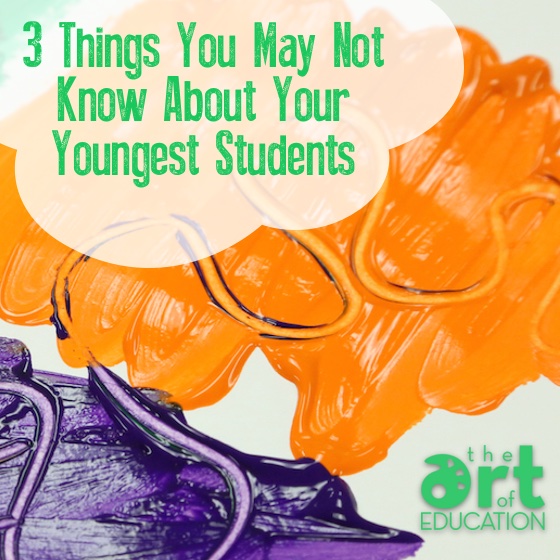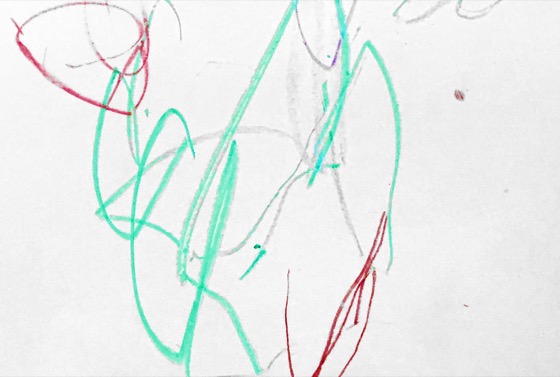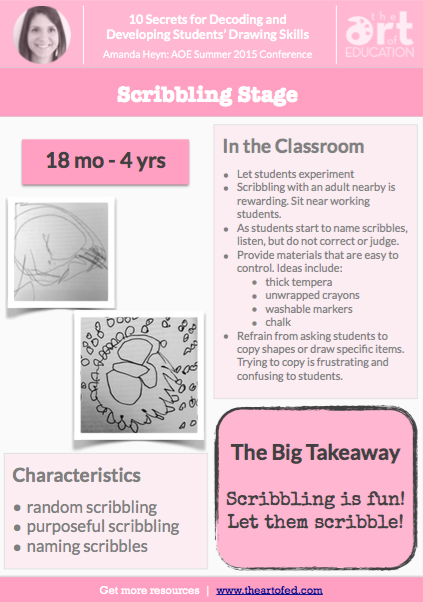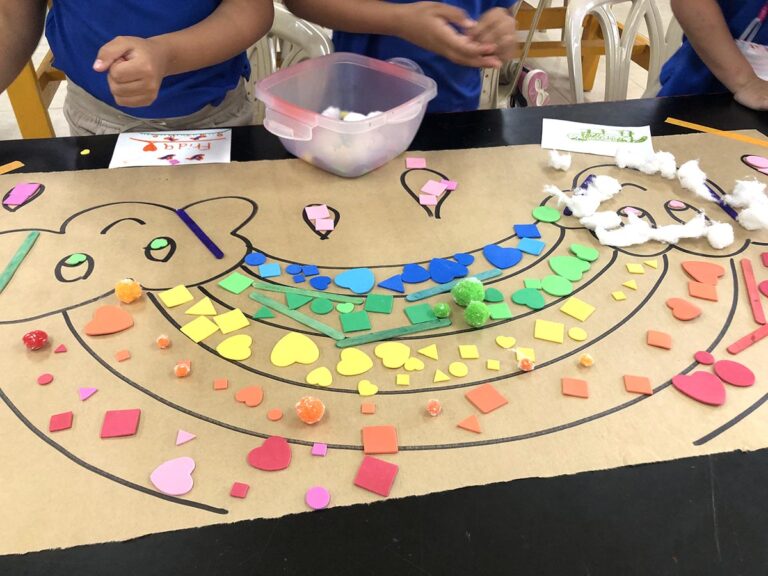Many of us are certified to teach preschool students through high school students. What a range! Leaving college, many of us feel fairly prepared to teach school-age children, but those early childhood kids remain a mystery to us. Some teachers fall back on craft projects, thinking googly eyes and stamps are where it’s at. There’s certainly nothing wrong with those types of projects every once in a while, but to provide a meaningful experiences for these littles, it helps to have a sense of what is going on inside of their heads.
Here are three things you might not know about your youngest students that will change the way you teach.

1. It’s important not to interfere too much during work time.
Around 18 months of age, children start to scribble intentionally, albeit randomly. In drawing development, this is known as “The Scribbling Stage.” Fitting, right? As children move through this stage, they begin to control their scribbling and eventually begin to name their scribbles around 3 years of age. However, up to even four years old, you probably won’t be able to see anything recognizable in their drawings. This is OK!

To help students develop during this stage, the best thing you can do is be present during work time. Pretty easy, huh? According to Victor Lowenfeld in his book Creative and Mental Growth, “…it is better to interact with children, to help them find ways to solve problems, rather than either to leave them alone or to provide specific answers.” He goes on to say that engaging in art is always a problem-solving experience. If the teacher provides too much direction, it can actually hinder students’ artistic progression. Having an adult be near while scribbling is a rewarding experience for a preschool age child.
2. Their brains are just not ready for certain tasks.
Many teachers working with early childhood students prompt them to draw certain shapes or even certain objects. The problem is that, for many, their brains are just not ready to complete these tasks. While circles come naturally to scribbling students, squares and triangles are almost impossible. Researchers have tried many different ways to teach students to do this and always fail. The same goes for asking students to draw certain people or objects. It just turns out to be a frustrating experience for everyone. A better time to teach these skills is in a few years when students are able to understand that an image on a piece of paper can be a symbol for a real-life object. Until then, these exercises prove ineffective.
3. It’s important to provide them with age-appropriate art materials.

Since students at this age are at all different levels with developing motor skills, teachers need to be thoughtful about the types of materials they present to students. For example, watercolors aren’t the best choice because they cannot be controlled. While we as adults might love the random effects watercolors can provide, a preschooler will definitely feel frustrated. The best materials are those that are easy-to-handle and easy-to-control. Large, unwrapped crayons are pretty much perfect. Other good choices include clay, chalk, and large markers.
Digging into child development is so helpful when thinking about planning your curriculum. If you need a refresher, be sure to sign up for the AOE Summer Conference where I’ll be presenting 10 Secrets for Decoding and Developing Students’ Drawing Skills. We’ll be going through drawing development from preschool through high school. You won’t want to miss it! In addition, Conference attendees will get the exclusive Drawing Development Reference Guide, which gives an in-depth, practical look at each stage. As a sneak peek, you can download the Scribbling Stage page below!
What are the youngest students you teach?
What other tips do you have about working with very young students?
Magazine articles and podcasts are opinions of professional education contributors and do not necessarily represent the position of the Art of Education University (AOEU) or its academic offerings. Contributors use terms in the way they are most often talked about in the scope of their educational experiences.





